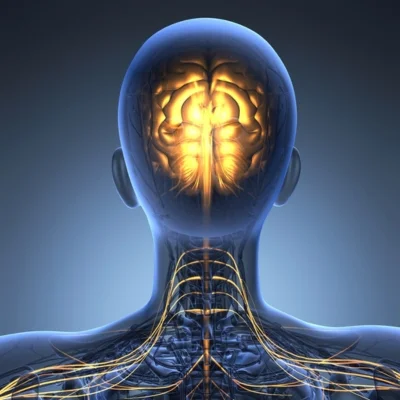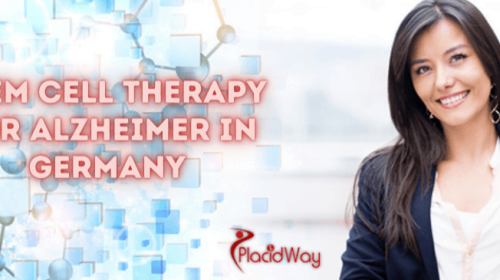Empowering the Mind with Stem Cell Therapy for Alzheimer’s Disease
Alzheimer’s disease is a progressive neurodegenerative disorder that primarily affects the brain, leading to a gradual decline in cognitive function and memory loss. It is the most common form of dementia, accounting for approximately 60-80% of all cases. The disease is named after Dr. Alois Alzheimer, a German psychiatrist who first described the characteristic brain changes in a patient back in 1906.
One of the defining features of Alzheimer’s disease is the accumulation of abnormal protein structures in the brain, including beta-amyloid plaques and tau tangles. These plaques and tangles disrupt the communication between brain cells, impairing their ability to transmit signals and ultimately causing cell death. As the disease progresses, the brain shrinks in size, leading to a wide range of cognitive and functional impairments.
The symptoms of Alzheimer’s disease typically start with mild forgetfulness and confusion, which gradually worsen over time. Individuals may have difficulty remembering recent events, names, or familiar faces. They may struggle with language and have trouble finding the right words to express themselves. Other symptoms include disorientation, changes in mood and behavior, difficulty with problem-solving and decision-making, and eventually a loss of independence in daily activities.

How does Stem Cell Therapy help Alzheimer’s Disease?
Stem cell therapy holds promise as a potential treatment for Alzheimer’s disease, a progressive neurodegenerative disorder that leads to memory loss and cognitive decline. Stem cells are undifferentiated cells that have the ability to differentiate into various cell types in the body. In the context of Alzheimer’s disease, stem cell therapy involves the transplantation of stem cells into the brain to replace damaged or lost cells and promote tissue repair.
One way stem cell therapy can help in Alzheimer’s disease is by replacing the damaged neurons in the brain. Neural stem cells have the ability to differentiate into mature neurons and integrate into existing neural circuits. By replenishing the depleted neurons, stem cell therapy can potentially improve cognitive function and memory in Alzheimer’s patients.
Moreover, stem cells have been shown to have anti-inflammatory and neuroprotective properties. They can secrete various growth factors and cytokines that promote neuronal survival, reduce inflammation, and support the growth of new blood vessels. These mechanisms may help to create a more favorable environment for brain tissue regeneration and repair.
Procedure of Stem Cell Therapy for Alzheimer’s Disease
Patient Evaluation
The first step involves a thorough evaluation of the patient’s medical history, symptoms, and overall health. Doctors will assess whether the patient is a suitable candidate for stem cell treatment based on specific criteria, such as the stage and severity of Alzheimer’s disease and the absence of any contraindications.
Stem Cell Source Selection
The second step involves selecting an appropriate source of stem cells for the treatment. This can include embryonic stem cells, induced pluripotent stem cells (iPSCs), or adult stem cells from sources such as bone marrow or adipose tissue. The choice of stem cell source depends on various factors, including availability and safety.
Stem Cell Collection
Once the appropriate stem cell source is determined, the stem cells are collected or generated in the laboratory. For adult stem cells, a minimally invasive procedure, such as bone marrow aspiration or liposuction, may be performed to collect the cells. If using iPSCs, the patient’s own cells can be reprogrammed into pluripotent stem cells in the laboratory.
Stem Cell Preparation
In this step, the collected or generated stem cells undergo a series of laboratory processes to isolate, purify, and prepare them for transplantation. Quality control measures are implemented to ensure the viability, safety, and efficacy of the stem cells.
Stem Cell Transplantation
The prepared stem cells are then transplanted into the patient. The method of transplantation may vary depending on the research or clinical protocol being followed. It can involve direct injection of stem cells into the brain, intravenous infusion, or targeted delivery to specific areas affected by Alzheimer’s disease.
Follow-up Care
After the stem cell transplantation, the patient is closely monitored for any adverse effects or improvements in symptoms. Follow-up assessments, including imaging studies and cognitive evaluations, are conducted to evaluate the response to treatment over time.
Best Stem Cell Clinics for Alzheimer’s Disease in the World
America, Guadalajara, Mexico
America, Guadalajara, Mexico
Stem Cell Therapy Packages for Alzheimer’s Disease Worldwide
Stem Cell Therapy for Anti Aging Success Stories
Don’t let Alzheimer’s disease control your life any longer! Take action today and explore the possibilities of stem cell treatment with PlacidWay. Reclaim your future and unlock the potential for a brighter tomorrow. Contact us now!
Frequently Asked Questions
What is the success rate of stem cell treatment for Alzheimer's disease?
The success rate of stem cell treatment for Alzheimer’s disease can vary from patient to patient. While stem cell therapy shows promise in slowing down disease progression and improving cognitive function, individual responses may vary. It’s important to have realistic expectations and discuss potential outcomes with your healthcare provider.
Can stem cell treatment cure Alzheimer's disease?
Currently, there is no known cure for Alzheimer’s disease. However, stem cell treatment holds promise in slowing down disease progression, improving cognitive function, and enhancing the quality of life for patients. Stem cells have the potential to repair and regenerate damaged brain cells, but the extent of the therapeutic effect may vary from person to person.
What causes Alzheimer's disease?
The exact cause of Alzheimer’s disease is not fully understood, but it is believed to involve a combination of genetic, environmental, and lifestyle factors. Abnormal protein deposits, such as beta-amyloid plaques and tau tangles, are characteristic features of the disease and are thought to contribute to the destruction of brain cells.
How long does the recovery process take after stem cell therapy?
The recovery process can vary among individuals. It may take weeks to months for patients to observe improvements or changes in their symptoms. The healthcare team will provide guidance on post-treatment care, monitoring, and follow-up appointments.
What are the early signs and symptoms of Alzheimer's disease?
Early signs and symptoms of Alzheimer’s disease may include memory loss, difficulty with problem-solving and planning, confusion with time and place, challenges with language and communication, misplacing items, changes in mood or personality, and withdrawal from social activities.
Request Free Quote











